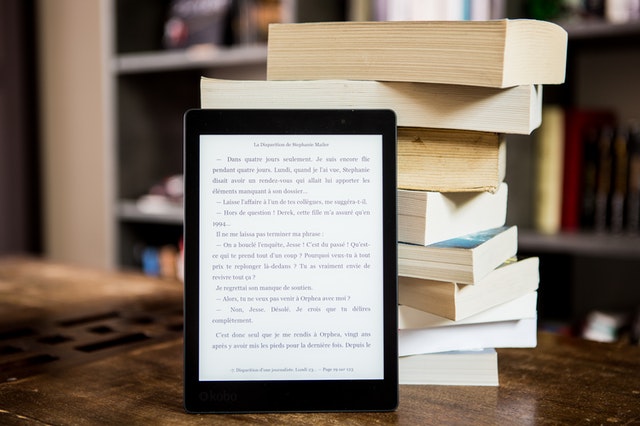Ebook Readers
It was only a matter of time before books would be targeted. The Internet has digitized everything, so why not books? They came for newspapers first, magazines second, and now books have been absorbed into digital formats. We’re not going to touch on whether we agree or not with this, it just is. The written word is still the word, but simply communicated in a different format is all.
In 2004 the Sony Librie emerged, something most folks likely never knew or simply don’t remember. This was an e-reader that some picked up on, but many discarded as a poor excuse to read digitally. The Sony Reader followed in 2006, but it wasn’t until the Amazon Kindle and access to an impressive Kindle store catalogue hit the scene in 2007 that people really began to tune in. The Kindle was so successful that it sold out in less than 6 hours.
The main criticism you hear from ebook readers is the reading experience is compromised due to average color display support, limited size, as well as so-so resolution. E-readers are also typically designed to offer access to only one provider (shop). This is good in the sense that it gives some of the smaller players in the game the ability to compete against the giants like Apple and Amazon. But customers are naturally constrained by the selection of their chosen provider. Second, this hurts the ability for people to buy e-books on the open market, and that is why the cost of e-books has not decreased much.
On the positive side, e-readers are astounding for several reasons, but the number one reason is being able to house a library of books in a single repository. Gone are the days of going on vacation and lugging a couple books, some old magazines you wanted to catch up on, newspapers, etc. Once you’ve consolidated everything onto to the e-reader you’re good to go. Additionally, for people that have difficulty reading (dyslexia or vision issues) ebook readers are great because you can adjust the font as well as the spacing between words.
Like cars, shoes, razors, or spatulas, there’s some good ones, and then some not-so good ones. Here are some of the best-rated ebook readers on the market.
Amazon Kindle Paperwhite
An absolute monster in the e-reader game, the Paperwhite is Amazon’s most popular reader. If you’re an Amazon customer, then this is the cream of the crop. The Paperwhite provides a ton of bang for your buck at only $129.99. It is waterproof, sports an exceptionally long battery life, can play audiobooks over Bluetooth and its flat front is extremely easy to clean.
Kobo Clara HD
If you’re borrowing books from public libraries and aren’t tied to Amazon, for example, the Clara HD is a good option. In terms of public library borrowing access, the Clara brings the widest variety, and this e-reader is small and light making it a snap to carry around. The only con that gets mentioned frequently is it is not waterproof. But the Clara does have a color-changing front light that is extremely useful.
Amazon Kindle Kids Edition
Coming back to the Kindle again, but this time for kids. This Kids Edition Kindle is the perfect “my first e-reader” for kids. At just $109.99 it doesn’t break the bank, and the parental dashboard allows you to monitor your kid’s usage as well as control any Amazon use. It’s not waterproof, and with kids this can be an issue, but if you’re keeping an eye on them, this is the best kid’s e-reader out there.
Onyx Boos Note2
Lastly, if you’re using your e-reader to work with, download large pdf files, mark them up, take notes, etc., the Note2 is the e-reader for you. Featuring full Google Play support, a note-taking pen, plus some great battery life, the only cons with this product is some third-party apps won’t display correctly and the Wi-Fi shuts off during sleep mode. Outside of that, if you need to get some work done on an e-reader, check out the Onyx.
In general, Amazon and Kobo dominate the e-reader category. But there’s been some new competitors sneaking in, and hopefully we’ll eventually see e-book prices drop as a result.


Comments:
Login to leave a reply